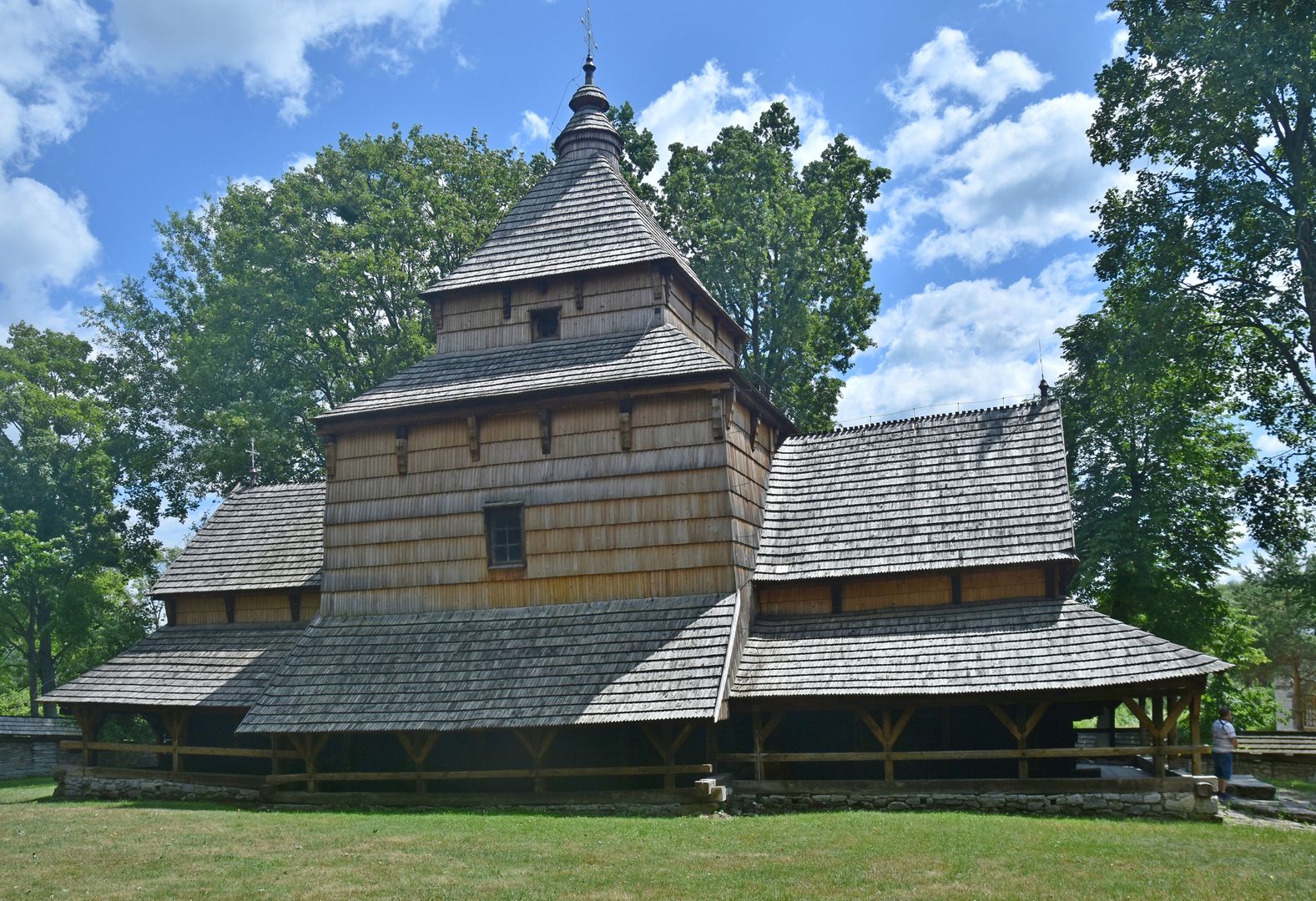St. Paraskeva's Church in Radruż
6.95

Overview
The Church of St. Paraskeva in Radruż, dating back to the 16th century, is one of the oldest and best-preserved examples of wooden Orthodox church architecture in Poland. In 2013, the site was inscribed on the UNESCO World Heritage List and included in the prestigious World Monuments Fund list, highlighting its significance in the protection of cultural heritage. Constructed from fir and oak wood, the church was built in the late Gothic style by carpenters trained in traditional woodcraft. Its structure consists of three square sections, with the tallest being a two-story nave topped by a quadrilateral dome. The church is surrounded by a defensive wall and covered arcades (soboty), giving it a fortified character. It is one of the sites that utilized its defensive features during the unrest of the 17th century, providing refuge from Tatar invasions. In the presbytery and on the iconostasis wall, polychrome paintings from 1648 have been preserved, likely the work of painters from Potylicz. The monument underwent restoration between 1963 and 1965, during which coins from the reign of King John II Casimir were discovered. Today, the church is part of the Museum of the Borderlands in Lubaczów and has been listed as a historic monument since 2017. The church shares architectural features with other local structures, such as the Temple of the Holy Spirit in Potylicz. Radruż is not only home to the church but also features a surrounding cemetery with valuable tombstones and the crypt of the former owners of Radruż. The site attracts both architecture enthusiasts and those interested in the history of the region.
Location
2025 Wizytor | All Rights Reserved